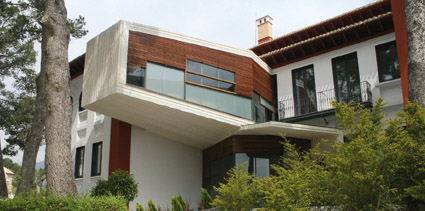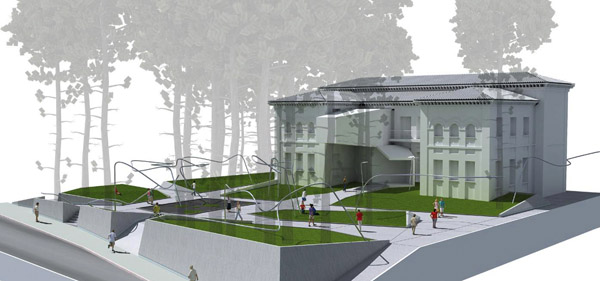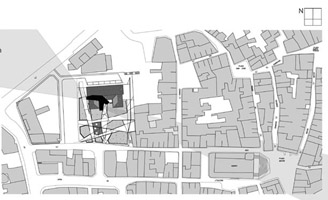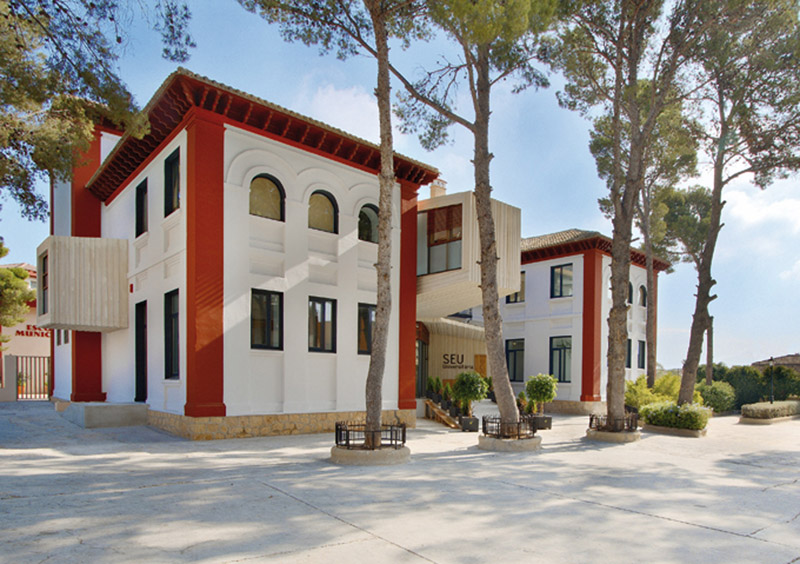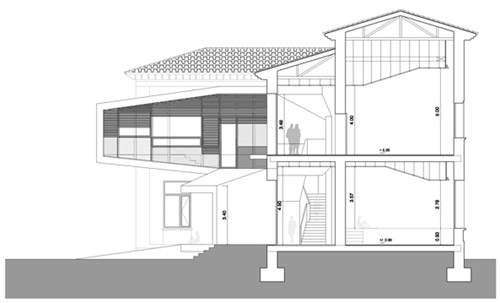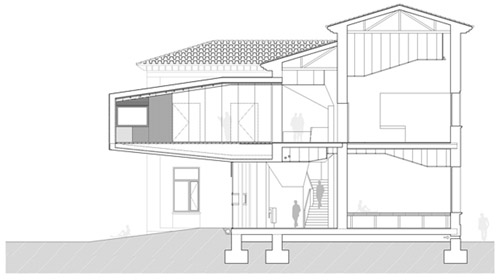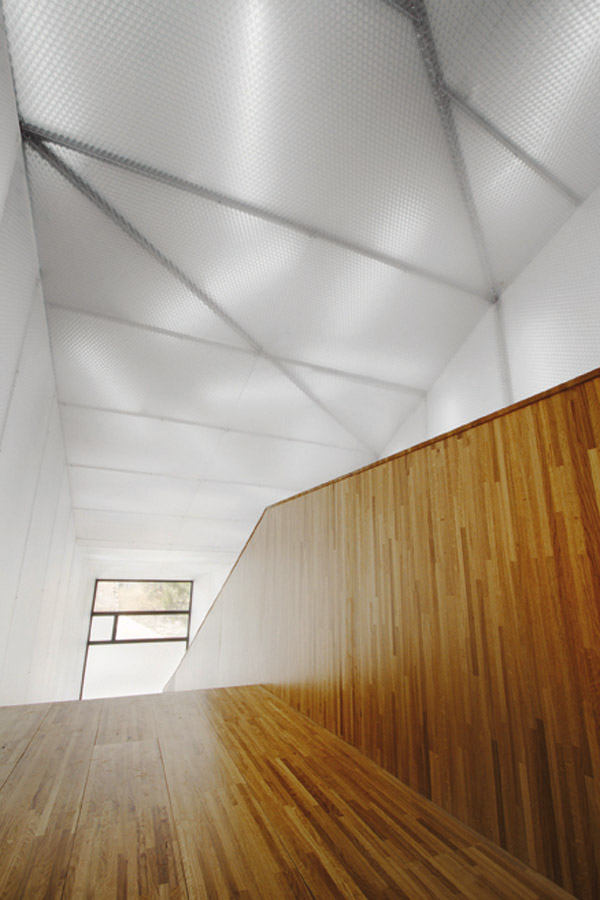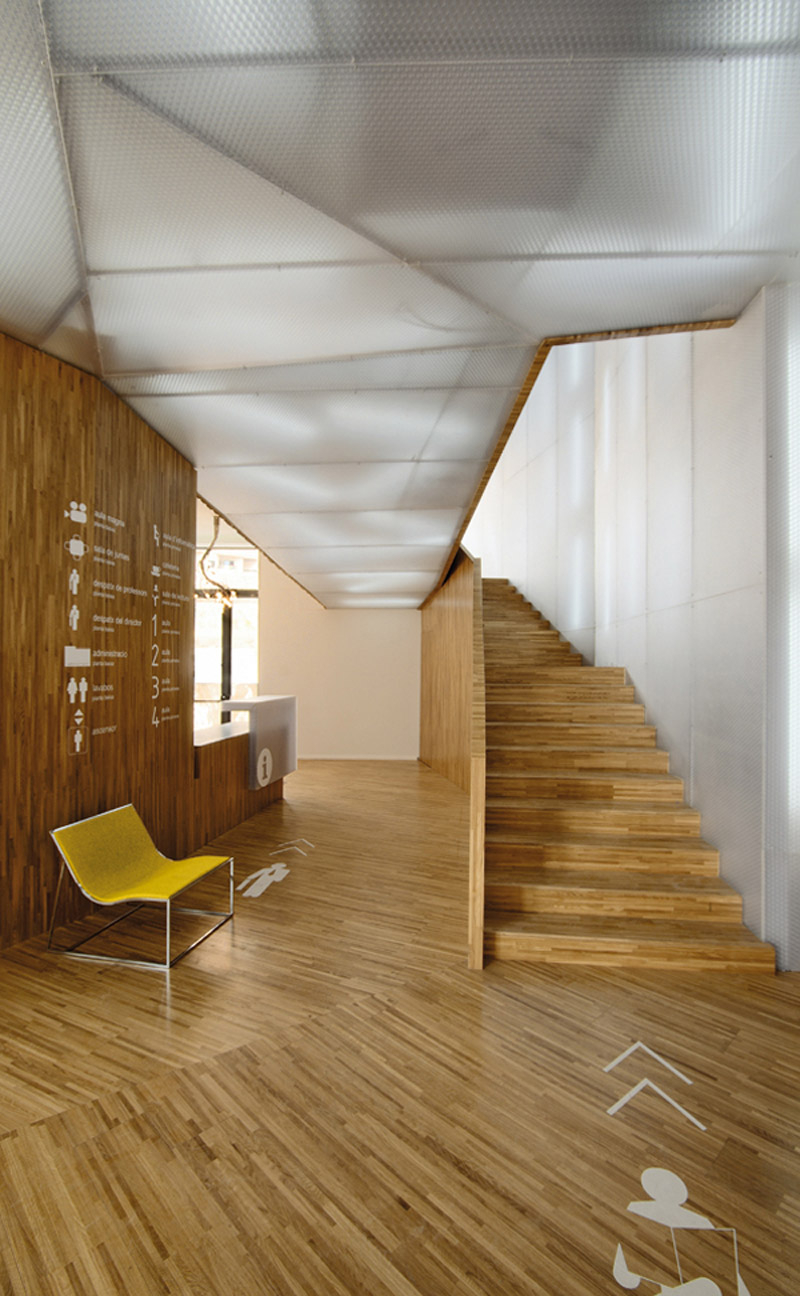El germen de esta intervención ha sido
una reflexión sobre cómo intervenir en el patrimonio, explotando la energía
que las construcciones antiguas poseen por formar parte de la memoria
colectiva, pero sin renunciar a las adaptaciones que deben sufrir para poder
albergar situaciones o actividades que tengan que ver con la sociedad
contemporánea. En este sentido, La Seu se reinventa y se dinamiza,
estableciendo un dialogo entre cada estadio de su evolución, los cuales son
materializados de formas diferentes, de acuerdo a cada periodo. Se propone
la introducción de una estructura gusano, capaz de equipar el edificio con
nuevas tecnologías y servicios, además de crear nuevos espacios. Esta nueva
estructura, se enrosca sobre si misma, materializando un volumen aéreo sobre
la entrada del antiguo colegio San Rafael, hacia el espacio de la plaza,
posibilitando nuevas vistas al mar desde las colinas de la Nucia. La nueva
arquitectura canaliza los flujos circulatorios, ampliando las posibilidades
de intercambio social que le da su ubicación en el conjunto. Las nuevas
actividades, la historia del lugar, la belleza del entorno y la relación con
la plaza, se funden en un complejo paisaje, social y natural, que
transciende lo que se entiende por arquitectura en un sentido convencional.
Si partimos de un análisis previo,
estudiando las sedes universitarias existentes en la actualidad en la
provincia de Alicante y su número de plazas observamos que La Nucia se
convertirá, tras la puesta en marcha de la Seu, en una de las ciudades de la
provincia con mayor número de plazas para este tipo de actos, lo cual se
traducirá en un aumento del flujo de visitantes de los núcleos urbanos
próximos.
La parcela pues, es núcleo de
activación de la ciudad y en ella convergen distintas circulaciones: hacia
el nuevo auditorio, hacia las escuelas municipales donde se ubica en la
actualidad la guardería de la zona centro, la futura residencia de
estudiantes, la propia sede universitaria y la puerta al casco antiguo de la
población.
Se han estudiado de forma conjunta
todos estos accesos más favorables, los recorridos que permiten optimizar el
uso del espacio, como un elemento más del paisaje.Una intervención “Abierta”
Se plantea una ordenación de la
plaza a partir de trazar vectores de acción, relación y visión que generan
su propio tablero de juego (topología), estableciendo las reglas de la
siguiente mutación de la Seu. Se definen espacios blandos y duros,
relacionados con posteriores desarrollos del edificio. Los duros, son ejes
vacíos que permiten recorrerlos y valoran las visuales. Los blandos sin
embargo, son lugares propicios a su propia evolución, capaces de adaptarse a
las actividades o programas que irán apareciendo.
El sistema es capaz de expandirse y
colonizar la pinada mediante apéndices programáticos (plug-ins), o de mutar,
albergando nuevas instalaciones o servicios (updates). Pero también permite
la ocupación de otros vacíos o equipamientos, estableciendo una estrategia
eficaz, de intervención en un medio ya consolidado que requiere reforzar y
definir su propia identidad, pública, democrática y abierta.
Planteamos una solución donde el
espacio publico cobre su verdadera dimensión como escenario generador de la
vida, solución que pasa por revalorizar todo el espacio existente, por
tanto, creamos un nuevo foco de actividad en la ciudad, que trata de poner
en valor no solo la nueva Plaza sino todo su entorno y posibilitar que se
puedan establecer todo tipo de relaciones entre nuestra actuación y el resto
de la ciudad. Para ello, en nuestra intervención creamos un LUGAR, a
consecuencia del cual se definen alrededor zonas con
características muy diferentes y con distintas posibilidades de desarrollo.
Al mismo tiempo nuestro edificio se
convertirá en polo de atracción e instrumento generador de actividades, es
por tanto un elemento gestor y dinamizador dentro de la ciudad, elemento
dinamizador de la gestión de actividades culturales en el conjunto de la
sociedad de La Nucia.
El nuevo edificio no intenta
mimetizarse con el entorno, se separa de el, estableciendo un dialogo con el
antiguo colegio San Rafael, poniéndolo en valor, sus arquitecturas son
diferentes y hablan, como con los mayores del paso del tiempo.
Planteamos la flexibilidad como
postura, frente a la inmutabilidad del tiempo. Flexibilidad como
temporalidad de planteamientos, como liberalización de los viejos legados
arquitectónicos, como forma de planteamiento intervencionista en el
patrimonio. De esta forma evitamos tener ciudades muertas pasando a tener
entornos vivos y dinámicos, con mayor capacidad de gestión del entorno en el
que se ubican. |
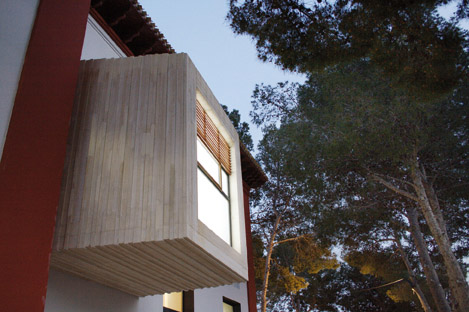
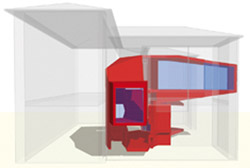 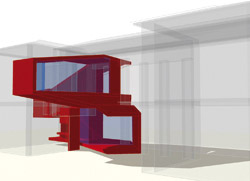
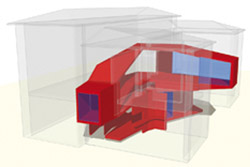
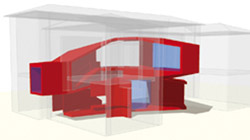
|
|
The germ of this
work was how to operate on legacies of the past, making use of the energy
that old buildings have through being part of the collective memory without
renouncing the adaptations that they need to undergo in order to house
activities or situations that have to do with contemporary society. From
this point of view, the Seu Universitaria is reinvented and made dynamic,
setting up dialogues between each of the stages in its evolution,
materialised in different ways in accordance with each period. A worm-like
structure is introduced to equip the building with new technologies and
services as well as creating new spaces. This new structure curls around on
itself, materialising as an aerial volume over the entrance of the former
San Rafael school, reaching towards the space of the square in front and
giving new views of the sea from the hills of La Nucia. The new body
channels the circulation flows, broadening the opportunities for social
exchanges afforded it by its place in the whole. The new activities, the
history of the place, the beauty of the surroundings and the relationship
with the square merge into a complex social and natural landscape that
transcends what is conventionally understood as architecture.
Starting from
prior analysis, studying the university buildings that currently exist in
the province of Alicante and the number of places they offer, it can be seen
that once the Seu is in service La Nucia will become one of the towns in the
province that offers the greatest number of places for this type of event,
bringing an increased flow of visitors from nearby towns and villages.
As a result, the
site is the focus for activating the town and different circulation routes
converge on it: towards the new auditorium, towards the municipal school
that currently houses the kindergarten for the central zone, the future
student residence, the university building itself and the gate to the old
quarter of town.
All these access
routes have been studied together to find the most favourable ones, the
itineraries that optimise the use of the space, like any other element of
the landscape.
An “Open”
operation
The suggested
organisation of the square is based on drawing vectors of action, connection
and sight which generate their own playing board (topology), setting out the
rules for the coming mutation of the Seu. Soft and hard spaces related to
later developments in the building are defined. The hard spaces are empty
axes that can be walked along and that enhance the views. The soft spaces
are places which are favourable to their own evolution, capable of adapting
to the activities or needs that will successively arise.
The system is
capable of expanding and colonising the pinewood through programmatic
appendices (plug-ins) or of mutating to hold new installations or services
(updates). However, it also allows the occupation of other voids or
facilities, establishing an effective strategy for operating on an already
consolidated medium that needs to reinforce and define its own identity,
public, democratic and open.
In the solution
suggested, public space acquires its true dimensions as the stage that
generates life, a solution that involves re-evaluating all the existing
space. This creates a new focus for activity in the town which tries to draw
attention not only to the value of the new Square but also to that of its
entire vicinity and make it possible for all kinds of relationships between
this work and the rest of the town to arise. For this reason, our operation
creates a PLACE and, as a result, zones with very different characteristics
and different possibilities for future development are defined around it.
At the same time,
our building will become a pole of attraction and a tool for generating
activities, consequently a revitalising and managing factor within the town,
bringing dynamism to the management of cultural activities in the society of
La Nucia as a whole.
The new building
does not attempt to imitate its surroundings. It draws apart from them,
setting up a dialogue with the former San Rafael school and bringing
appreciation of it. Their architecture is different and they speak, as
though with old people, of the passing of time.
Against the
immutability of time, we suggest flexibility as a stance. Flexibility as
temporariness of approaches, as liberalisation of the old architectural
legacies, as a way to approach operations on our heritage. In this way we
will avoid having dead towns and move on to having alive and dynamic
environs, with a greater ability to manage the surroundings in which they
stand. |
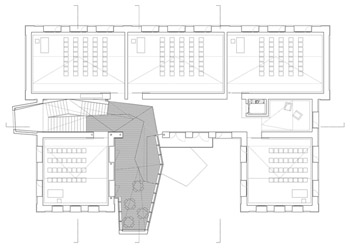
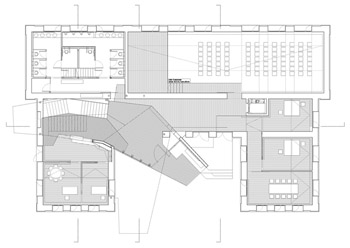
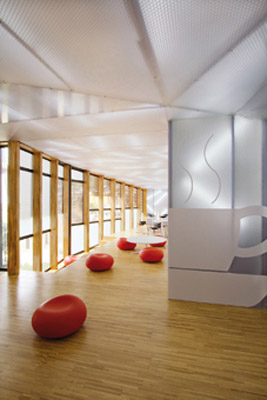 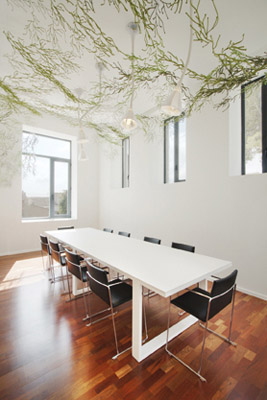 |
